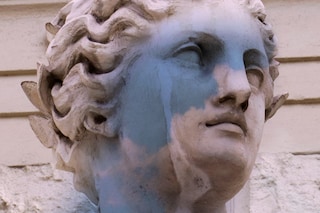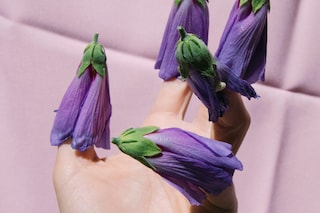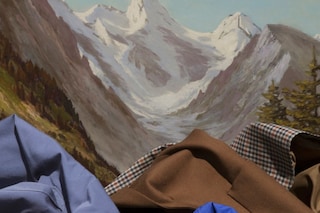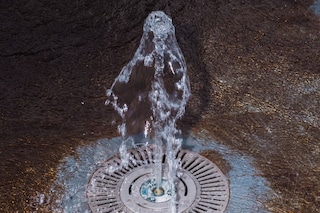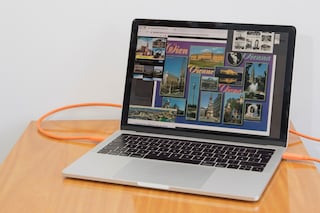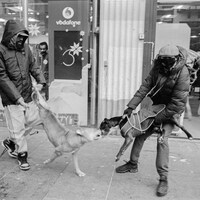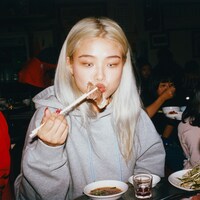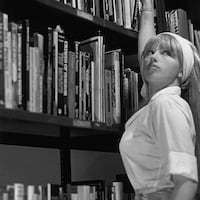‘It’s about the irony of representing a place and the longing for the faraway’: Stefanie Moshammer’s new book, Louis Vuitton Fashion Eye: Vienna, flirts with our expectations of her hometown
By her own admission, Stefanie’s Moshammer’s relationship with her hometown of Vienna is complicated. Despite being a city celebrated for its pleasant orderliness, the Austrian visual artist’s feelings for the city in which she grew up are multi-layered, contrary, and somewhat untidy. It’s a relationship which for many years has thrived on a certain amount of absence. “I love Vienna, because I’m not there all the time,” she tells Dazed in a conversation over email. “It’s like I’m having a distant relationship with my hometown. If I were there continuously, I might get bored and annoyed – much like spending too much time with a partner.”
Her latest photo book, commissioned by Louis Vuitton as part of its Fashion Eye series, presents a vision of Vienna that resists conventional, overworked representations of the city. Determined not to just echo stock imagery and tourists’ snaps, Moshammer interrogates these threadbare clichés with her characteristic humour and energy. Beginning by delineating what Vienna isn’t rather than embarking on what it is, the opens with screen grabs of her desktop, featuring a selection of opened files depicting excessively beautiful scenery – palm trees, waterfalls, skyscrapers and temples – each titled “i wish this was vienna.tif”, “also not vienna.tif”, “sadly not vienna.jpeg”.
Unlike the experience of Vienna itself – which the photographer describes as “comforting in its order and structure” – Moshammer’s book isn’t a neat vision that adheres rigidly to the preconceptions of Vienna as simply and idyllically historic, grand, quaint. Looking at the city through Moshammer’s eyes, there are loose ends, contradictions and, if anything, Louis Vuitton Fashion Eye: Vienna raises more questions than it answers.
Below we talk to Stefanie’s Moshammer about circumnavigating convention, interpreting a brief in her own unique way, and how to spend a perfect 24 hours in her hometown.
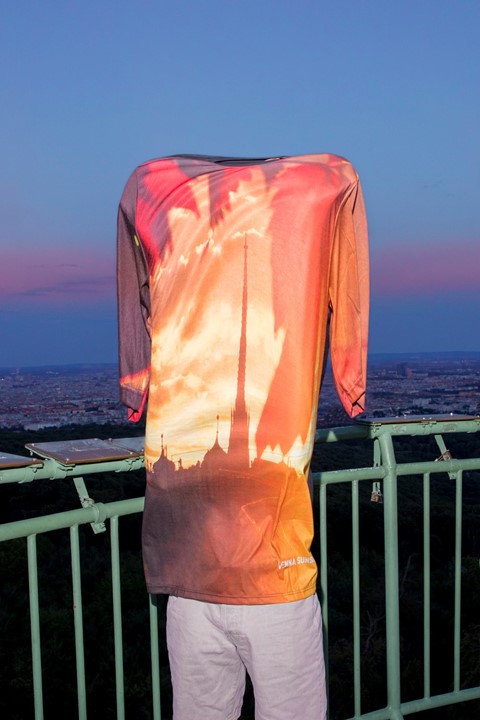
Please could you begin by telling us about this project and your intention for it?
Stefanie Moshammer: I was commissioned by Louis Vuitton to take a close look at my hometown – Vienna. The book is part of the Louis Vuitton Fashion Eye series. When discussions about my contribution to the Louis Vuitton Fashion Eye began, the editor initially approached me to create a book on Las Vegas, inspired by my first publication, Vegas and She (2015). However, due to the COVID-19 pandemic, plans shifted, and they asked me to focus on Vienna instead. At first, I was a bit frustrated since I’ve always been more inclined to capture the distant and foreign. Vienna felt too emotionally and physically close to me. However, in the end, that’s the unique aspect of this book.
Please could you tell us about your history and relationship with Vienna?
Stefanie Moshammer: I love Vienna, because I’m not there all the time. It’s like I’m having a distant relationship with my hometown. If I were there continuously, I might get bored and annoyed – much like spending too much time with a partner. Vienna is comforting in its order and structure, lacking the hustle and bustle of many other cities. I appreciate that, but when I stay too long in Vienna the comfort starts to feel brutal. Occasionally, I need the opposite – an unpolished, raw version of a place, which is hard to find in Vienna.

I love the opening spreads that take us through the various landscapes that aren’t Vienna. Please could you tell us why you wanted to begin in this way?
Stefanie Moshammer: In this work, I’m also flirting with my own expectations of Vienna. What do I want Vienna to be? How do I want Vienna to be? It’s about the irony of representing a place and the longing for the faraway. The opening pages play with this idea, showcasing every place except Vienna.
Many ideas emerged in response to the editor's request. One of the requests was to present an exotic version of Vienna. Vienna is not typically considered exotic, so instead I included images of exotic places taken in various countries and provided commentary by giving them titles like ‘unfortunately not vienna.tif’, ‘i wish this was vienna.tif’ and ‘almost vienna.tif’ etcetera.
The composition of this book feels really an integral component of it. Please could you tell us about your own approach and philosophy towards this?
Stefanie Moshammer: My connection with Vienna is definitely not fluid or linear. I also took this into consideration when deciding on the concept and layout for the book. It’s filled with layers, and two elements are the paradox of expectations and clichés that someone outside of Vienna might have, and the second is my personal approach, which also comes with my own expectations and sentiments.
“This book is also not trying to tell a story about one certain subject in Vienna. Rather, it’s an opportunity to demystify existing ideas and to reflect on imposed concepts of the city” – Stefanie Moshammer
I love this inclusion of so many visual references and materials. Are they all from your archive? Could you tell us about the kinds of images that appear in the book?
Stefanie Moshammer: When I shared my first images with the editor of the Louis Vuitton Fashion Eye book, more clichés have been requested and I was like, ‘Oh my gosh, that’s all that people expect from Vienna anyway, why should I even show that if you can just Google it?’ So rather than photographing all these clichés, I researched them and included screenshots of the emails where more clichés were requested. Initially, it was a way to decline the editor’s request, but it later became an integral part of the book’s concept. The coloured pages in the book serve as notes and background stories, with hints and leads, desktop screenshots, work-process insights, Instagram stories, Spotify music lyrics, restaurant ratings, and more. It’s a playful exploration of online presence and online research.
There’s something quite iconoclastic about this book, given the abiding clichés and pervading ideas that persist about Vienna in the cultural imagination. What new or unexpected stories do you think emerge from this body of work? What vision of Vienna emerges?
Stefanie Moshammer: My approach was not to create a book with new and unexpected stories about Vienna. This book is also not trying to tell a story about one certain subject in Vienna. Rather, it’s an opportunity to demystify existing ideas and to reflect on imposed concepts of the city. The book highlights that there’s not just one Vienna – there are many different versions of Vienna. And, ultimately, it is about my own perspectives and visions I have about Vienna, expressed through various symbolic references. While my perception of Vienna has changed over the years, the city itself hasn’t changed much. And after this book, Vienna will still be Vienna.
If we were to spend 24 perfect hours in Vienna, where would you take us and what would we do?
Stefanie Moshammer: We would start by having soda zitron and apfelstrudel at Cafe Prückel, then take a bike ride to the Danube for a swim – even in the winter if you’re up for it. Next, we’d head to the Natural History Museum to see their amazing rock collection. Afterwards, we'd visit Steinhofgründe, a wild park in the west of Vienna, including seeing an Art Nouveau church designed by architect Otto Wagner. We’d catch the sunset there, with a view over the Viennese forest. And we'd end our day by having a drink at Loos Bar, an iconic art deco bar designed by Adolf Loos.
Louis Vuitton Fashion Eye: Vienna by Stefanie Moshammer is available now.
Join Dazed Club and be part of our world! You get exclusive access to events, parties, festivals and our editors, as well as a free subscription to Dazed for a year. Join for £5/month today.

